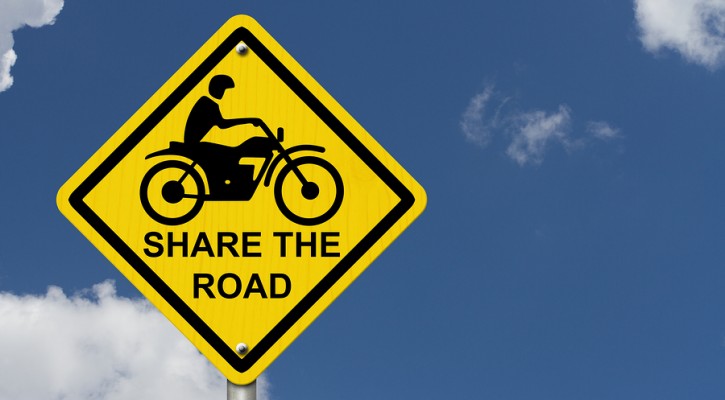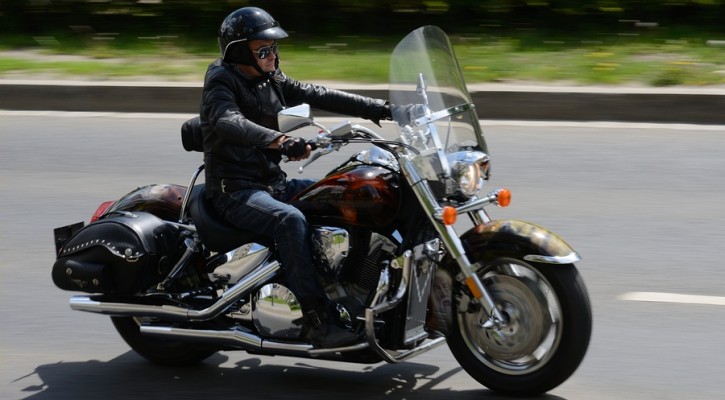Motorcycle Awareness for the Clueless – Lesson 11
May 22, 2014
Lesson 11: Roaring Engines Double as Warnings
For some drivers, it can be quite jarring to hear a motorcycle loudly rev up next to them in traffic. Sometimes bikers are simply showing off their engines, however, other times this loud noise can double as a warning when used in moving traffic.
Since many motorcycle horns aren’t nearly as loud as the engines they sit upon, motorcyclists sometimes rev up their engines to make enough noise for other drivers to know that they are there. This can be an effective technique when people in cars and trucks try to change lanes while the biker is in their blind spot.
So, if you hear an engine roar and a biker quickly ride past you, don’t be offended, and don’t take it as an invitation to drag race. This is simply a way of being noticed, and thereby avoiding getting run over by trucks and cars on the road.
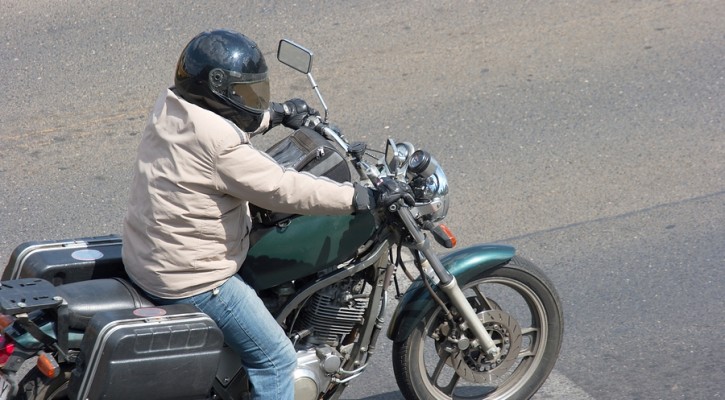
Motorcycle Awareness for the Clueless – Lesson 3
May 9, 2014
Lesson 3: Are their brake lights out?
Have you ever noticed that most motorcycles slow down with no visual warning (brake light)? You might have been in traffic, or pulled up to a stoplight, and wondered “Why didn’t that biker’s brake lights turn on? Are they busted?”.
More than likely, their brake lights work just fine, they just aren’t using their brakes. Most bikers avoid using their brakes when slowing down or approaching an intersection. Instead, they utilize a downshifting strategy to reduce speed, and therefore have no need for brakes or brake lights.
So, the next time you find yourself driving behind a motorcycle make sure you give them plenty of space. Since most drivers have been conditioned to respond to brake lights, it can more difficult to notice a biker’s deceleration without the bright red lights there as a warning.
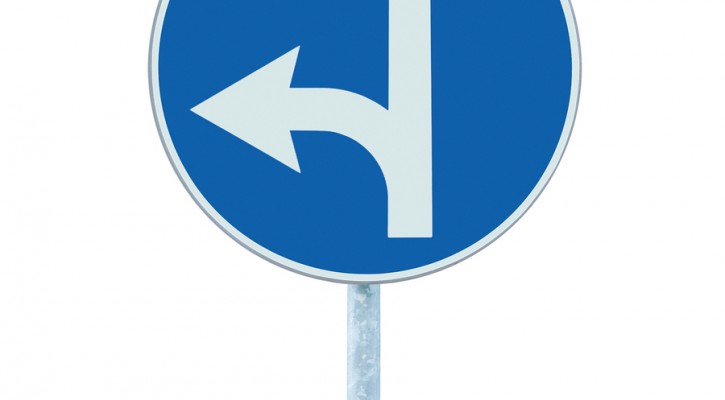
Motorcycle Awareness for the Clueless – Lesson 2
May 8, 2014
Lesson 2: Deadly Left-Hand Turns
Left-hand turns account for more than half of two-vehicle motorcycle collisions, and result in many motorcycle fatalities each year. Due to limited visibility, motorcycles – as well as cyclists and pedestrians – are at a much higher risk when passing through intersections. For this reason, always be sure to take extra caution when making a left hand turn.
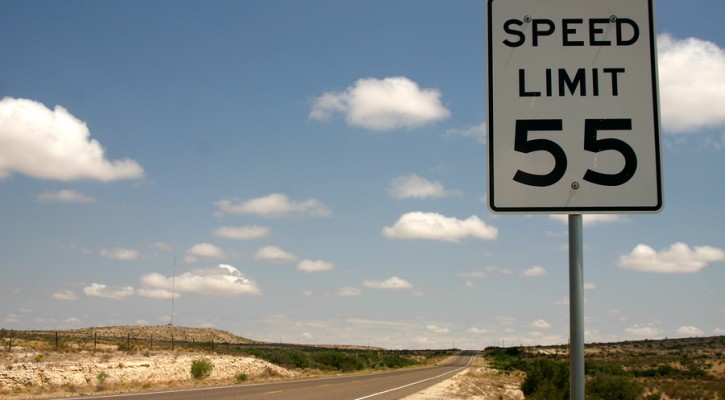
Motorcycle Safety and Speeding
May 7, 2014
As the hype over Motorcycle Awareness Month spreads across the country, law enforcement will be on the lookout for unsafe drivers as well as unsafe riders this summer. One of the riskiest riding habits, as well as the easiest traffic ticket targets, is speeding. So ride easy this summer and coast along at a comfortable speed. Those speed limit signs are set for your safety, as well as everyone else’s. #ridesafe.
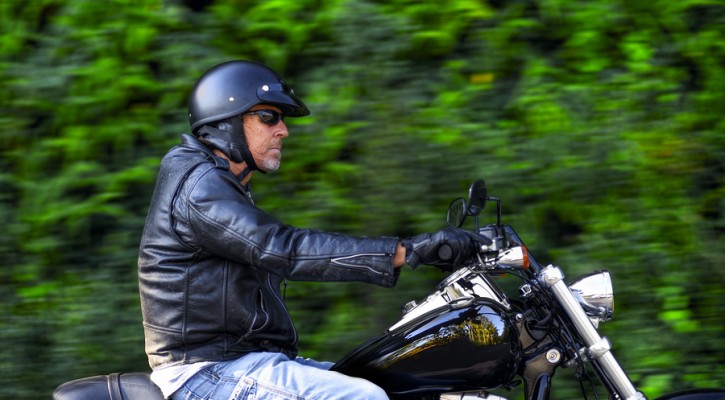
Motorcycle Awareness for the Clueless – Lesson 1
May 7, 2014
Lesson 1: Why is that scary biker honking at me?
One day, you were driving down the road, minding your own business, when suddenly you heard a motorcycle engine roar, a horn honk, and looked over to see a leather-clad biker passing you with startling speed. At the time, you might have wondered, “Why is that scary biker honking at me?”
Well, first of all, the biker isn’t scary just because he/she is wearing leather. Tough leather jackets help protect motorcyclists from road rash in the event of a crash. But, to answer the initial question: most bikers honk at cars to let them know they are there. The motorcyclist may be trying to escape your blind spot, hence the honking and quick acceleration. Simple as that.
So, the next time you hear a honk and notice it is a motorcycle passing you by, politely share the road and give that conscientious biker a friendly wave.
Causes of Motorcycle Fatalities
May 5, 2014
In 2008, motorcycle fatalities peaked at 5,312 deaths. Then, despite increased motorcycle ownership, fatalities dropped down to 4,469 deaths in 2009. This phenomenon occurred on the heels of a decade-long pattern of dramatic increases in the motorcycle fatality rate. It was a glimmer of hope in the face of ever-increasing motorcycle deaths.
However, since that glorious year in the history of motorcycle safety, fatality rates have been creeping up again, and were last reported at 4,612 in 2011. So, what happened? What caused the dramatic decrease in deaths, and what is fueling the steady increase today?
In honor of that one magnificent year in reduced motorcycle fatalities, and in celebration of Motorcycle Awareness Month, we’re going to break down the key causes of motorcycle fatalities in America.
Cars Making Left-Hand Turns. This is the single most dangerous situation for motorcyclists, accounting for more than half of two-vehicle motorcycle collisions.
Speeding. Supersport motorcycles are built for racing and modified for highway use, and sport motorcycles are very similar with a lower power to weight ratio. These bikes are designed for speed. The quick acceleration and excellent control make them great for experienced riders, however, the power may be too much for new riders, and too tempting for those prone to high-risk behavior. No matter what type of motorcycle you ride, take it easy and never go faster than your abilities and experience can handle.
Alcohol. Avoid alcohol when you ride. This is a no-brainer that too many motorcyclists fall victim to. Speeding and alcohol are the two biggest contributors to single-vehicle motorcycle accidents.
Head Injuries. The chances of dying in a motorcycle crash are exponentially higher without a helmet.
Lane Splitting. The close proximity to cars, reduced space for maneuverability, and the fact that cars don’t expect a vehicle to be passing them between lanes make the act of lane-splitting incredibly dangerous.
Road Hazards. Potholes, road cracks, slick conditions, uneven asphalt, gravel, roadkill and other debris pose a serious threat to motorcycle riders.
Inexperience. The increase in motorcycle safety classes and other programs may have had something to do with the dramatic decrease in motorcycle fatalities in 2009. Inexperienced riders should always seek out motorcycle safety courses that allow new motorcyclists to master both the basic, essential and advanced skills needed to ride safe.
Drivers and riders need to look out for each other, not just in May but all year long. Keep these common fatality causes in mind the next time you hit the road, and as always, #ridesafe.
May: Month of the Motorcycle
May 1, 2014
May is Motorcycle Awareness Month, and states across the U.S. are unleashing their public awareness campaigns to promote motorcycle safety.
In Texas, officials encourage motorcyclists to look out for each other, and have posted “Share the Road” and “Look Twice” signs to remind drivers to be safe as motorcycles increasingly come out of hibernation. Meanwhile, up in the north Michigan Secretary of State is promoting motorcycle safety by hopping on his Harley-Davidson Sportster and riding with a group of fellow motorcyclists. Governors, legislators, and average citizens are joining ABATE (American Bikers Aimed Toward Education) in conferences and events to promote the month of the motorcycle, with a great emphasis on biker safety and sharing the road.
Here are some helpful tips for motorists on the road during May’s Motorcycle Awareness Month:
- Always double-check mirrors and blind spots before changing lanes
- Look twice before pulling out of parking lots and driveways, or when turning at intersections
- Use those blinkers! Turn signals should be used when changing lanes, merging with traffic, or making turns
- Don’t be fooled by a flashing turn signal on a motorcycle – motorcycle signals are often not self-canceling. Wait to be sure the motorcycle is going to turn before you proceed.
- Give motorcycles more following distance, since they are capable of braking quicker and are more vulnerable in emergency situations
And, we have several important safety reminders for motorcycle riders as well:
- Wear a DOT-approved helmet
- Never ride while impaired
- Always signal turns, merges and lane changes
- Wear brightly colored protective gear, but ride as if you are invisible
- Avoid blind spots

